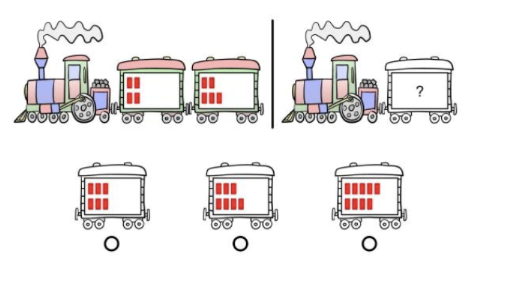The CogAT® Test for 1st Grade builds upon the foundational thinking and reasoning skills assessed in Kindergarten. It measures how well a young learner understands relationships between concepts, numbers, and images, without relying heavily on reading skills. This makes it a key assessment for identifying gifted and talented potential at an early age.
While many question types are similar to those in Kindergarten, the 1st Grade CogAT introduces slightly more advanced logic and problem-solving challenges. Students begin to demonstrate stronger fine motor skills and spatial awareness, which are helpful when using a bubble sheet to record answers—something many 1st graders will do for the first time on this test.
Tip for parents: TestingMom.com members can download free bubble sheets to help their children become familiar and comfortable with this test-taking format before test day.
CogAT 1st Grade Practice Questions by Subtest
Below, you’ll find CogAT 1st Grade sample questions that mirror those found on the actual test. Practicing these helps students build confidence and improve their performance on test day.
1) Quantitative Battery – Number Puzzles
This section measures a child’s ability to solve math-based puzzles and recognize relationships between numbers. Students must think critically to find missing values or balance equations using addition, subtraction, and other basic operations.
In the following number puzzle subtest example, there are two trains. Each must be pulling the same number of red “boxes”. The child’s task is to identify which train should replace the train(s) with a question mark. So, the train to the left of the chain is pulling the same number of red boxes as the train to the right of the chain.
Example #1:
Look at the example below. Do you see how the first train is pulling two cars with 9 red boxes? Now look at the second train. It is pulling one car with 0 red boxes. We need to add another car where the question mark is, so this train will be pulling the same number of red boxes as the first train. Which car should we add so the second train will be pulling 9 red boxes?


2) Non-Verbal Battery – Figure Classification
Figure Classification challenges students to spot similarities among shapes and patterns. Children must choose the figure that belongs in a set based on visual traits, helping educators understand their pattern recognition and visual reasoning skills.
Example: A student sees two rows of shapes. The top row shares a visual trait. The student selects a shape from the bottom row that fits the same rule.
Example #2:
Look at the shapes on top. They are alike in some way, and so they belong together. Choose one shape from the bottom row that belongs with the figures on top.
3) Verbal Battery – Verbal Analogy
Verbal Analogy questions assess language reasoning. Students must determine how two pictures are related and apply the same relationship to a second pair of pictures. This builds vocabulary and enhances critical thinking without requiring reading fluency.
In the verbal analogies example below, the child sees a pair of items on top that have a certain relationship with each other. The child must determine how they are related to each other. Then, the child must choose a picture from the possible answers that will have the same relationship with the picture on the bottom left.
Example #3:
Look at the two pictures on top. They go together in some way. Now, look at the picture in the bottom box and then review the answer choices. Do you see a picture among the answer choices that goes with the picture on the bottom, in the same way the pictures on top go together?
4) Quantitative Battery – Number Series
In this subtest, students are shown a sequence of numbers or images and must identify the pattern to predict what comes next. This builds early algebraic thinking and number sense.
In the number series subtest, the child sees an abacus with one rod missing. The child needs to review the first five rods and look for a pattern or rule. Then the child should choose the sixth rod that would continue to pattern or follow the rule in the sixth place.
Example #4:
Look at the example below. This is an abacus. The beads in the first 5 rods form a pattern or follow a rule. The beads in the sixth rod are missing. Can you choose the rod that goes in the sixth place that would complete the pattern or follow the rule?
5) Non-Verbal Battery – Paper Folding
In the example below, the child observes a series of pictures depicting the folding of a piece of paper. Subsequently, one or more holes get punched into the paper. The child’s task is to choose the answer that illustrates what the paper will look like when unfolded.
Example #5:
Parent, say to your child: Take a look at the pictures across the top. They show a piece of square paper being folded. Then, one or more holes are punched in the folded piece of paper. Can you point to the answer that shows what the unfolded square piece of paper will look like?
Answers:
1) Option 3 – with 9 red boxes
2) Option 3 – always has a middle black square; 3 squares are black
3) Option 2 – the fan
4) Option 3 – a rule of each number repeating twice: 4,4,1,1,5,5
5) Option 2
If you’re seeking assistance with CogAT® 1st Grade, TestingMom Online Tutoring is here to help. We understand the importance of nurturing cognitive development and achieving success in assessments. Our team of expert tutors specializes in CogAT preparation and can provide the guidance and support your child needs for success. Schedule a FREE consultation call with one of our experts today to give your child the advantage they deserve.
CLICK HERE for more information about the CogAT, as published by Riverside.
